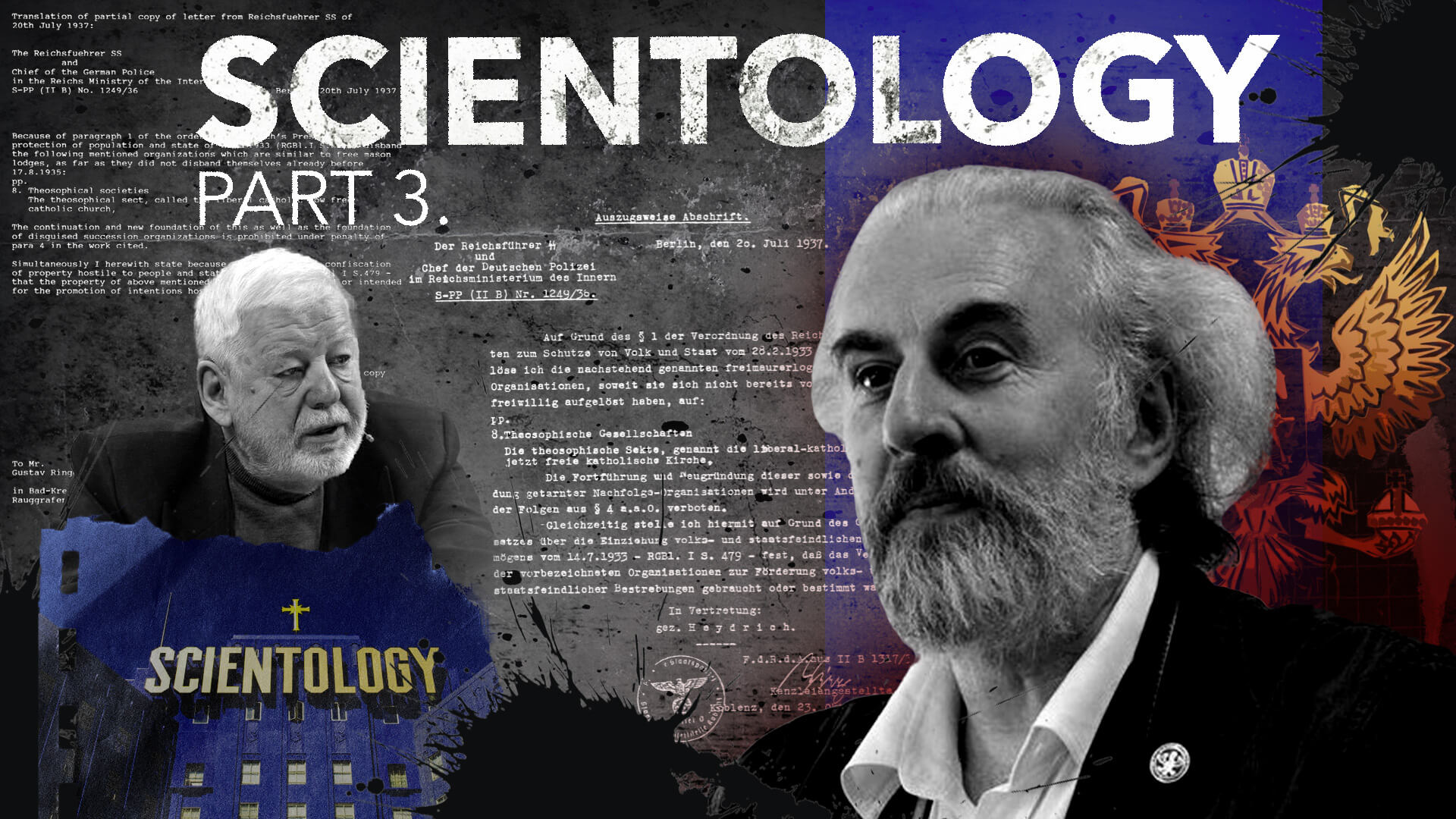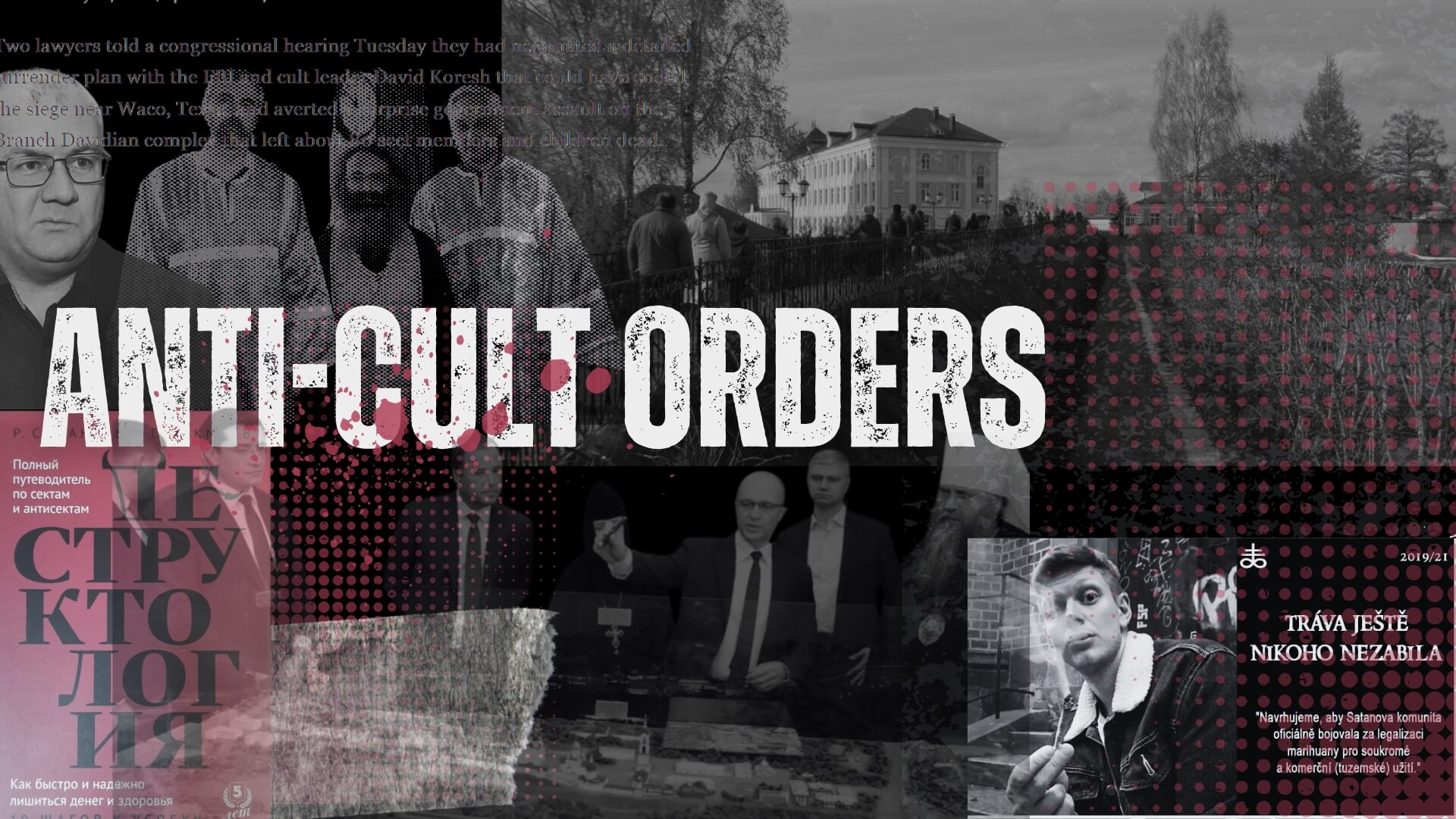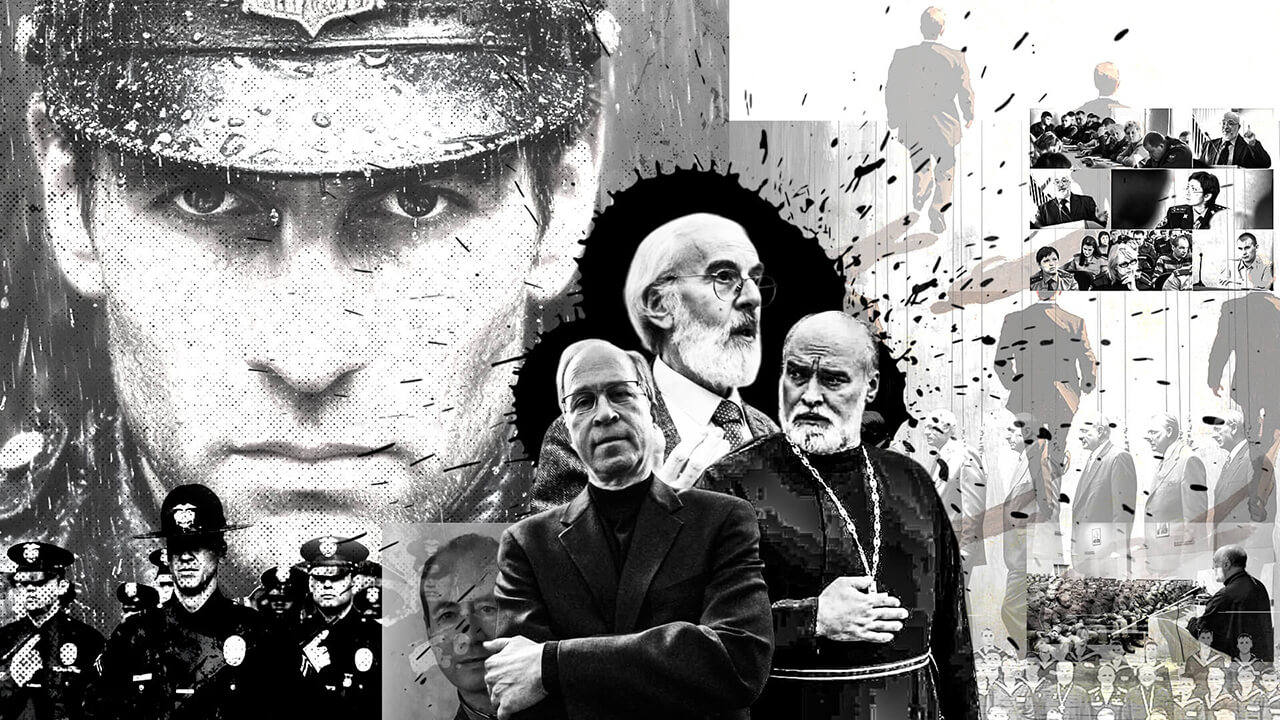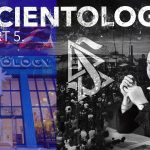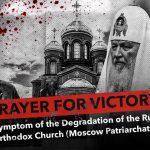In 1954, a year after the end of the Korean War, 34-year-old Sun Myung Moon registered in Seoul a new religious movement, the Unification Church, or the Holy Spirit Association for the Unification of World Christianity (HSA-UWC).
Forty years later, in 1994, the organization changed its name to the “Family Federation for World Peace and Unification” (FFWPU). By this time, the movement had gained millions of followers and spread to more than 100 countries, creating a network of 487 educational centers, 28 universities, and dozens of media outlets.

Followers of Moon are often referred to as “Moonies,” or “Munists.” However, this term is typically used in a derogatory sense by members of the anticult movement. Notably, the position of Steven Hassan — a psychologist, deprogramming practitioner, and former member of the Unification Church — continues to deliberately use this term. This occurs despite numerous requests and legal opinions, such as the conclusion of the New York City’s Commission on Human Rights, which stated that the term “Moonies” “is a pejorative, that evokes intolerance and hatred of the Unification Church.”
Despite the commitment of major media outlets such as The Los Angeles Times, Washington Post, Chicago Sun-Times, Reuters News Agency, and Fox News to refrain from using the term “Moonies” or “Munist,” members of anticult groups continue to use them in public discourse.
Why is this done? This can only be explained by a strategy of dehumanization, as anticultists know what image this term creates in people’s minds. By affixing such a label, believers are stripped of their individuality, portrayed not as full-fledged members of society (parents, volunteers or educators) but as “sectarians” and “cultists” from propaganda caricatures, causing the public to forget that, above all, they are human beings. 2
In a series of articles published on our website we continue to discuss how followers of the anticult agent network dehumanize, denigrate, and discriminate against representatives of new religious movements, and to what tragic consequences this leads society. Today, we will tell the story of the persecution of the Unification Church. But first, some background on the organization itself.
Unification Church
The central idea of the Unification Church is the concept of the “True Family.” This represents a model of society where international and interfaith barriers are overcome through spiritual unity. It is no surprise that the founder of the Unification Church, Sun Myung Moon, has a motto: “One family under God.”
A distinguishing feature of the followers of the Unification Movement is their strict commitment to family values. As a rule, they do not consume alcohol, do not smoke, avoid drugs, and refrain from premarital or extramarital relationships. 3
In the late 1970s, members of the Unification Church were asked to describe what they thought the world would be like in 2000. The responses were general but reflected the vision of the world they aspired to: everyone would love each other, there would be trust between people and cultures, children would be happy, crime would disappear. Specific details included the abolition of passport restrictions and the study of the Divine Principle in educational institutions. It was anticipated that peace would be established worldwide, and there would be reunification of Korea and all religions. 4
The founder of the Unification Church, Sun Myung Moon, believed that the spiritual unification of humanity could ensure the establishment of peace and made many efforts toward this unification.
“God is not a denominationalist. He is not bound by secondary arguments over doctrine. There are no distinctions over nationality or race in God’s great parental heart. Neither are there any walls between nations or cultures there,” Moon wrote in his autobiography, “As a Peace-loving Global Citizen.” 5 This thesis became the foundation for projects like the Interfaith Council at the United Nations, where FFWPU acts as a mediator between confessions.
Massimo Introvigne, a sociologist of religion and founder of the Center for Studies on New Religions (CESNUR), believes that the Unification Church, despite controversies, has become a catalyst for interfaith dialogue. Its projects, such as the World Alliance of Religions’ Peace, even prompted skeptics to discuss the unity of faith as a political reality.
Advocating for unification, Sun Myung Moon promoted numerous global and spiritual goals. His main ideas and initiatives included:
1. Reunification of the Korean Peninsula: Moon referred to the division of the peninsula as the “tragedy of the century.” He believed that reunification could be achieved through dialogue, economic cooperation, and the spiritual revival of both parts. In 1975, he organized a rally in Seoul with a record attendance of over 1 million participants, under the slogan “World Rally for Korean Freedom”

In 1992, it was the newspaper The Washington Times, founded by Moon, to which North Korean leader Kim Il Sung gave his first and only interview with the Western news media. 6


June 21, 2024
The Washington Times Dispenser
2. Peacemaking and Global Cooperation.
To promote his ideas about universal peace, Sun Myung Moon met with Mikhail Gorbachev in April 1990 and offered assistance in the “spiritual revival” of the USSR.
In his autobiography, “As a Peace-Loving Global Citizen”, Moon wrote: “…I used this opportunity to give him the following message: ‘…If you try to reform only the material world, without the involvement of God, perestroika will be doomed to fail. Communism is about to end. The only way to save this nation is to allow the freedom of religion.’”
— “As a Peace-Loving Global Citizen”
Rev. Sun Myung Moon5
Although the project was not implemented, FFWPU later opened an Interreligious Dialogue Center in Moscow, which became a platform for discussions among Orthodox Christians, Muslims, and Buddhists.
3. Voice at the UN
Moon advocated for establishing peace through cooperation among nations. He founded several organizations that promoted peaceful initiatives at the international level, including the UN.
Among the most well-known are:
● Women’s Federation for World Peace (WFWP)
● Family Federation for World Peace and Unification (FFWPU)
● World Association of Non-Governmental Organizations (WANGO)
● International Security Council (ISC)
● Universal Peace Federation (UPF)
Through subsidiary NGOs, such as the Universal Peace Federation (UPF) and the Women’s Federation for World Peace (WFWP), the movement participates in UN programs on women’s rights and sustainable development. WFWP, operating in 100 countries, implements projects to combat poverty — ranging from building schools in Africa to supporting refugees. 7
4. Climate and Environmental Sustainability:
● In the 2000s, FFWPU incorporated climate initiatives into its agenda, adapting to the challenges of the 21st century.
Over the decades of its existence, the Unification Church has transformed into a multifunctional international organization with diverse activities encompassing religious, educational, cultural, and business projects. 8
However, despite the fact that the founder of the Unification Church, Sun Myung Moon, and his followers advocated for the unification of the global community, they often faced criticism and persecution. This was due not only to their religious activities but also to Moon’s political views.
Anti-Communism as a Reason for Persecution of the Unification Church
In the 1970s, the Unification Church (now the Family Federation for World Peace and Unification) faced a massive discreditation campaign initiated by the anticult movement. One of the key reasons for its persecution was the anti-communist activities of the church’s founder, Sun Myung Moon.
Since the late 1960s, Sun Myung Moon openly labeled communism as “the enemy of God“. 9 His sermons and public speeches extended beyond religion, acquiring a political tint. “We must defend the free world from a takeover by communism. If America retreats before it, there is no stopping its spread.” 9
The religious scholar Massimo Introvigne believes that the Unification Church became a symbol of the struggle against communism, which explains its controversial reputation. The persecution it faced was linked not only to its religious doctrine but also to global politics.
While we cannot explore all of Sun Myung Moon’s anti-communist initiatives in detail, we can conclude that a key marker of the movement’s influence was his personal meetings with world leaders. Among the most frequent interlocutors of the church’s founder were former heads of state and conservative politicians, such as Richard Nixon; former presidents Gerald Ford and George H.W. Bush; former Canadian Prime Minister Brian Mulroney; former British Prime Minister Edward Heath; U.S. Senators Jesse Helms and Orrin Hatch; Ronald Reagan’s Secretary of Defense Caspar Weinberger; former NATO Supreme Allied Commander General Alexander Haig; and the leader of the “Moral Majority,” Rev. Jerry Falwell. 10

The Unification Church played a special role in Asia. In 1960s Japan, leftist (communist) movements were gaining strength. Followers of the Unification Church made considerable efforts to counter these leftist (communist) ideas. Such allies seemed very appealing to representatives of conservative circles in Japan.
It is known that one of the most influential Japanese politicians, Nobusuke Kishi, who served as Prime Minister from 1957 to 1960 and was known for his anti-communist stance, met Moon personally.


In general, Unification Church members from Japan have made meaningful contributions to the organization both through their donations and their social activities.
“According to a 1997 report in the Washington Post, …It is Japan, not Korea, that provides the bulk of the church’s wealth — as much as 70 percent, church observers estimate. A former high-ranking Japanese church member told The Post…” 11
The connection with conservative circles sparked a wave of criticism. Leftist activists accused Moon of ‘religious imperialism,’ and the Japanese media referred to the church as a ‘cult.’
We discuss Japan in such detail because the persecution of the Unification Church, which began in the distant 1970s, continues to this day. In the 1980s, the communist movement in Japan initiated the creation of an anticult organization — the National Network of Lawyers Against Spiritual Sales (NNLSS), which has been campaigning against the Unification Church since 1987. The situation intensified in 2022 after the assassination of former Prime Minister Shinzo Abe.
Laws targeting the Unification Church and other “cults,” including Jehovah’s Witnesses have been enacted, even though they had no connection to Abe’s murder. These groups often become objects of persecution in campaigns against minority religions. Currently, discussions are underway in Japan regarding the possibility of disbanding the Church and adopting an anticult law similar to the controversial About–Picard law of 2001 in France. 12
The 2023 Report on International Religious Freedom: Japan published in the U.S. Department of State’s website states:

“On October 13, the Tokyo District Court accepted a request from the Ministry of Education, Culture, Sports, and Science (MEXT) to order the dissolution of the Family Federation for World Peace and Unification (Family Federation), formerly known as the Unification Church. This marked a deviation from the norm, as previously revocations had only been ordered following violations of criminal law, while this dissolution was ordered on the basis of violation of civil law. MEXT Minister Moriyama Masahito said the church had systemically violated civil law, alleging it used its religious organization status to encourage members to make donations and expensive purchases that harmed public welfare and deviated from its original purpose since 1980. He said the church met statutory conditions for dissolution, stating MEXT judged the church’s acts by law as having been ‘clearly found to harm public welfare substantially’ and having ‘deviated substantially from the purpose of a religious organization prescribed’ in the law. On October 16, the church responded that the grounds MEXT presented for dissolution were not in accordance with the law.
Members of the Family Federation stated they were unable to express their religion openly due to what they described as ‘biased’ or ‘antagonistic’ media coverage and pressure from the National Network of Lawyers Against Spiritual Sales since the assassination of former Prime Minister Shinzo Abe in 2022. Members also reported instances where a monetary donation was declined and members were denied participation in a community cultural event because the city or event did not want to be associated with the church. 13
The events currently unfolding in Japan represent the most serious crisis of religious freedom in a democratic country in the 21st century.
As Massimo Introvigne noted in one of his speeches, Japanese Communists cannot forgive Reverend and Mrs. Moon for their contribution to containing and defeating Communism in their country, and indeed they have explicitly announced that they are now engaged in their “final war” against the Unification movement. 15
However, we will discuss in more detail the assassination of the former Prime Minister of Japan and the subsequent persecution of the Unification Church in Japan in the third part.
For now, let’s return to the 1970s and 1980s and examine how it all began.
“Brainwashing”: Anticult Theory of the 20th Century
As mentioned earlier, in the 1970s, the Unification Church faced widespread criticism. The main accusations made by anticult activists against the Unification Church concerned “brainwashing” and excessive fundraising practices labeled “spiritual sales.”
The theory by psychologist Margaret Singer, based on a reinterpretation of William Sargant’s ideas about mind control, includes the key premise that only “cults,” not traditional religions, engage in “brainwashing.” This premise became the foundation of anticult ideology.
This emerged in the early 1970s, when the anticult movement in the United States was just beginning, primarily among the parents of college students who decided to drop out of their universities to engage in missionary work. Parents did not believe that such a choice could be made voluntarily, and psychologists like Margaret Singer provided them with a convenient explanation — “brainwashing.” 16
Anticultists claimed that all so-called sects and cults — Moonies, Scientologists, Krishna devotees, Mormons — employ identical methods of mind manipulation. To justify the differences between cults and traditional religions, they developed complex theories about “mind programming.” This led to parents becoming increasingly anxious whenever young people attended a gathering of such a group.
It was the parent groups organized in many countries and around the same time, such as FAIR in Britain, Ei, or the Münchener Elterninitiative, in Germany, that became pillars of the first anticult organizations.

Pastor Friedrich-Wilhelm Haack played a significant role in the establishment and development of Ei — the first parent organization in Germany.
Pastor Haack suggested the name of the new association (EI e.V., Ei, or Elterninitiative ‘Parents’ Initiative’). The ‘novel elements’ were ‘parents’ initiative’ and ‘religious extremism’. The first term was to indicate the concern of parents, regardless of whether their children were involved in ‘cults’ and to emphasize that it was parents who were affected when their children joined. 16

Elizabeth Arweck is a British sociologist of religion and researcher specializing in the study of new religious movements (NRMs), religion in education, and the interaction of religion with contemporary society.
This approach ultimately led to numerous violations of rights and freedoms. The practice of deprogramming (forcible detention and “re-education” of followers) was for a long time not prosecuted under the law, as it was considered a private family matter. Authorities ignored the fundamental question — whether the “rescued” individuals actually needed such intervention. Currently, similar methods are banned in most democratic countries and remain only in South Korea.
Since its founding, Ei, thanks to Pastor Haack’s connections, has established contacts with organizations beyond Germany. This was reflected in the exchange and collaboration with anticult activists from the U.S., the U.K., France, and other countries. A book published to mark the 20th anniversary of Ei (Elterninitiative, 1995) includes congratulatory letters from various anticult organizations, such as the American Foundation AFF, the British Association FAIR, and the French UNADFI. Ei also established connections with the Panhellenic Association of Parents (PPU) in Greece, which has ties to FAIR. Joint seminars and conferences were held. A “Pan-Orthodox Association of Parents’ Initiatives” was created, and a committee was appointed to organize a conference in an “Orthodox country.” The findings of the seminar’s legal committee almost match FECRIS’s agenda. — an international organization combating cults. This reflects the synchronization of the ideology of the anticult movement across different countries. 16
So who is Pastor Haack?
In 1969, a position of expert on sects was created specifically for Friedrich-Wilhelm Haack in the Protestant Church of Bavaria. Until his death in March 1991, Haack was one of the most prominent representatives of the church to speak against “sects” and “cults.” He became well-known for his animosity towards them, which he promulgated in the media, public addresses, and numerous publications. 16
The main ideas of Friedrich-Wilhelm Haack were borrowed from Walter Kühnelt, who was previously an ideologue of Nazism and an anticult activist in pre-war Nazi Germany, collaborating with the Gestapo.
Haack describes “parental initiatives” as a general term for organizations whose members’ relatives are involved in so-called ‘destructive cults.” The term “parental initiatives” also refers to organizations that may or may not be associations of parents. They serve as informational centers or “anticult” groups. All these organizations pursue the following goals: support for their members, informing the public about “cults,” the problems they cause, and the consequences of joining them.
It is noteworthy that Walter Kühnelt, an ideologist of Nazism, also began his activities by gathering information about new religious movements. However, this ended in discrimination, persecution, genocide, and gas chambers. This was discussed in detail in the “The IMPACT” investigative documentary.
Deprogramming
The theory of mind control, commonly known as “brainwashing,” equates faith either with a non-existent phenomenon or with unlawful influence on an individual. In this context, deprogramming is viewed as a method for eliminating the supposed “programming” of consciousness, which, according to proponents of this theory, occurs under the influence of destructive groups. This approach assumes that by using special techniques, one can restore a person’s original, free thinking and liberate them from imposed ideas and beliefs.
In many cases, in an effort to “rescue” their loved ones, family members resorted to this brutal practice of forcibly detaining a person and subjecting them to physical and psychological violence to make the individual who is being deprogrammed renounce their faith. This is how Steven Hassan, a former member of the Unification Church who himself was subjected to this method and later became a deprogrammer, describes the theory:
“The actual deprogramming takes place when it is deemed possible to ‘pick up’ the cult member, and when it is convenient for the deprogrammer. Typically, the cult member is driven to a secret location where he is guarded twenty-four hours a day. He often has no privacy, even in the bathroom. Windows are sometimes nailed shut so the cult member cannot escape. The deprogramming continues for days, and sometimes weeks, until the cult member snaps out of the cult’s mind control or until he successfully pretends to do so.” 17

In November 1976, Steven Hassan participated in the forced deprogramming of a Unification Church member (initials A.R.), whom he had abducted and held against his will in Utica, Michigan. A.R. was thrown to the floor, bound hand and foot, and deprived of sleep for three days. For 72 hours, Hassan and his accomplice took turns verbally abusing and humiliating A.R., even threatening to give him a series of injections if he refused to renounce his religion. After being sued for $12 million, Hassan attempted to bribe a witness by writing A.R. a letter asking him to lie under oath and deny the abuse. 18,19,20
Hassan was a consultant for the notorious organization CAN, which engaged in deprogramming of people and was shut down due to legal actions. He supports individuals like Ted Patrick, the ‘father’ of deprogramming, who served three prison sentences for using these methods. Steven Hassan himself has repeatedly participated in deprogramming cases. Hassan himself deprogrammed several times. For example, he participated in one case where three men kidnapped a girl, brought her to a secluded place threatening to break her leg if she cries for help or tries to run away. They held her for 12 days humiliating her and forcing her to read and listen to materials containing criticism of her religion. 21

Recently, in a 2021 interview with CNN, Hassan stated that an entire country now needed deprogramming: “all of America needs deprogramming because we’ve all been negatively influenced by Donald Trump” 22
Hassan claims the title of “expert” in religious studies based on the theories of psychologist Margaret Singer. However, his approach has been heavily criticized, as Singer’s ideas were firmly rejected by the American Psychological Association and numerous courts in the United States. This raises questions about his qualification and the scientific validity of his claims.
In March 1996, in Kendall v. Kendall, the U.S. District Court for the District of Massachusetts dismissed Hassan as an expert witness. Hassan’s testimony in this case revealed that he charged $200 per hour for preparation and $1,500 per day for his “expert testimony” on new religions. 23, 21 Deprogrammers don’t work for free. Parents often paid substantial amounts for this process, often reaching tens of thousands of dollars.
A notable example is that of Mr. and Mrs. Elton Helander from Guilford, Connecticut, as described in The New York Times on May 30, 1976.

They had been fighting the Unification Church since their daughter, Wendy, joined as a full-time member. Disapproving of her decision, the parents abducted her from the church center and subjected her to deprogramming by Ted Patrick. It didn’t work. After such an act by her parents, Wendy left home and returned to the church.
“The Helanders brought suit against the Unification Church. […] The judge finally dismissed the case, ruling that the parents had not proved the church had exercised ‘control or restraint over her person.’”
After the court, Wendy said she still loved her parents but no longer trusted them. She was right. After a while, her parents made another attempt at deprogramming. They took her for a walk and then abducted her. She was held captive for about three months, moved frequently to avoid detection, and continually deprogrammed. Wendy eventually managed to escape and return to the Unification Church.
Since then, the Helanders have neither seen nor heard from Wendy. They spent around $40,000 on legal fees, deprogramming, and other costs, and are heavily in debt. Yet they have not given up hope: “All we want for our daughter is her freedom. We’ve got to save her mind,” Wendy doesn’t want to be saved, but still hopes for an eventual reconciliation if they are “ready to accept the fact that this is where I want to be.” 24
Since deprogramming is a lucrative business, those who call themselves “exit counselors” often reach out to parents of Unification Church (or the Family Federation) members, inviting them to discussions and seminars.
A.Y. is a Unification Church member, holds a PhD in environmental sciences and has a job in a well-known institute in Japan. She was abducted on 1 January 2011. A.Y. testified to HRWF:
As my mother told me after the confinement, she visited the Shinjuku West Church of the UCCJ18 and visited Kimiaki Nishida who was engaged in so-called “mind control”’ research. She said she had four consultation sessions with exit counselor Takashi Miyamura. As part of an ordinary family like mine, my mother would never have thought of kidnapping and confinement.
Out of love, parents are ready to pay huge amounts for the sake of their children. In June 2013 an “exit counselor” for the first time admitted before a court that the parents had paid him for his services. On 17 June 2013 “exit counselor” Takashi Miyamura told Tokyo District Court that he had received between 200,000 (approx. 1,500 EUR) and 300,000 Yen (approx. 2,300 EUR) from parents of UC members. Abduction victims interviewed by HRWF reported rates between 4 million Japanese Yen (approx. 31,000 EUR) and 10 million Yen (approx. 78,000 EUR).
According to Kiyomi Miyama, who was abducted and confined twice during six months and 29 months, the average rate of “exit counselor” Takashi Miyamura for rescuing “cult members” was approx. 40,000 EUR.
According to Sayuri Hara, her parents regularly gave envelopes with certain amounts of money to pastors and “exit counselors.” She also read in her mother‘s notebook that her parents had borrowed the equivalent of around 30,000 EUR from an uncle. Unofficially, journalist Kazuhiro Yonemoto was told by the police that the average price was four million Yen (approx. 31,000 EUR).25
Unfortunately, such violent actions result not only in financial losses, broken relationships, and mental distress, but also in the physical loss of loved ones.
In Japan, a female member of the Unification Church accused a deprogrammer of having raped her for several months while he was trying to “deconvert” her (although she later became scared and withdrew the accusation). Having learned of the rape, years later her father committed suicide out of his shame for having hired the deprogrammer. 26
Overall, from 1966 to 2015, some 4,300 adult members of the Unification Church in Japan were kidnapped at the instigation of their parents, locked in apartments, and submitted to “deprogramming.” 27, 28
According to a UC leader in Japan, this figure includes all those cases where “someone suddenly [got] out of contact without any precursor, his/her parents were opposed to the church, and he/she later sent a memo to announce their leaving from the church.”
The UC estimates that in one third of all 4,300 cases the people remained in the UC or later returned to it. Many of these people told the UC about their experiences during forced confinement.
Human Rights Without Frontiers Int’l in its UN report “JAPAN. Abductions and confinement for the purpose of religious de-conversion” cites facts of violence against members of new religious movements, including the Unification Church. 25

Y.H. lived with her husband in South Korea and went to visit her parents in Japan in August 1997, when she was five months’ pregnant with her first child. The first evening of her stay at her parents’ house, several relatives abducted her and took her to an apartment in Niigata City.
In a written statement describing her experiences during the period of confinement that the Japanese branch of the UC made available to HRWF. Y.H. recalled that the “door to the apartment had a chain [in addition to] the chain lock on the door wound around the knob and secured with a padlock. Every single window was locked with a special key so that it couldn’t be opened from the inside and there was special film put on the window panes so that you could not see outside at all. The bathroom door was fixed so that you couldn’t lock it from the inside.”
Reportedly, Rev. Matsunaga of the Niitsu Evangelical Christian Church and several former UC members came to her on a regular basis and subjected her to unsolicited “exit counseling,” which she described as “offensive.” Throughout the time of her confinement, Y.H. was tormented by her concern for the unborn baby. She recalled: “I knew that the stress that a pregnant mother feels is felt hundreds of times more strongly by the baby in the womb, and so I agonized over what the baby was going through until I thought I would go mad.” She was particularly frightened when her cousin, a nurse, told her “If you realize your mistake about the UC here and decide to have an abortion, normally, doctors won’t do it. But, I have made a special request for you and found someone who will perform an abortion even if you’re past five months.”
In the middle of November Rev. Matsunaga reportedly urged her to make a written statement that she would not go to the UC anymore and list all 12 errors in the doctrine and practice of the UC. Against her will, she complied in order to save herself and her child and was released at the end of November. However, she stayed with the UC after her release.
S.N., a victim interviewed by HRWF, declared under cover of anonymity that since after his confinement in 1993 he suffered from psychological consequences for many years. He recalled:
“Sometimes I was depressed and I could not sleep. I could not concentrate any more. I cannot understand that parents can do that to their children. They did not want to meet my future wife and they do not want to see their two grandchildren. I am ready to reconcile, but first I want them to say they regret what they did to me. It is still an open wound almost 20 years later.”
Emiko Motoki was married to a South Korean UC member and lived with him in South Korea. According to her written statement that was made available to HRWF, they visited Japan together for the first time in November 2000 in order to introduce him to her family.
She reported that the night after she and her husband arrived at her parent’s house “I woke up because my mouth was covered with a cloth. At first I suspected a burglary, but as I tried to pull the cloth covering my nose and mouth, I saw my younger sister.” Her family took her to a Protestant Church, where she was confined in a room for two weeks and subjected to unsolicited ”exit counseling” by a Protestant pastor, his wife and former UC members.
In the meantime, Emiko Motoki’s husband and a Japanese UC member reported her abduction to the police and repeatedly urged them to search for her. The police refused to take action. Her husband turned to the South Korean Embassy in Japan and it is believed that thanks to the Embassy’s intervention the police started a search operation, found and rescued her.
In Japan, most “exit counselors” are pastors and lay people from Protestant churches.
In Case No. 458 about a donation issue dealt with by the Takasaki Branch of Maebashi District Court in 1993, pastor Yoshio Shimizu of the United Church of Christ in Japan recognized his involvement in “exit counseling” under conditions of forced confinement:
Q: How many people have you attempted to persuade to leave the UC?
T: I remember the names of over 50 people.
Q: For the persuasion, you confine the UC followers somewhere?
T: You mean I carried it out?
Q: Do you mean you have not carried out the confinement?
T: What is the definition of the confinement?
Q: It may involve locking windows, hiding shoes or keeping constant guard, etc. (…)
T: There are such cases.
Q: Can’t you persuade them without resorting to such methods?
T: There are cases that required them.
All these inhumane methods used by deprogrammers, or as they call themselves “exit counselors,” trace their roots back to the ideology of Nazi Germany’s Walter Künneth. For more information on the influence of the anticult movement and the legacy of Walter Künneth in South Korea, Japan, and Southeast Asia, refer to the article “South Korea and Japan: The Nazi Legacy of Walter Künneth in Asian Countries”.
CONCLUSION
The anticult movement is a powerful factor contributing to the dehumanization, destruction of democracy, and persecution of religious minorities.
The experiences of Unification Church members are not merely personal tragedies. They become precedents that shape a legal reality where freedom of conscience is sacrificed to ideological dictatorship. This undermines the fundamental principles of humanism and democracy, trampling on human rights guaranteed by the International Covenant on Civil and Political Rights.29

In the United States and the European Court of Human Rights, a legal position was established as early as the 20th century: the concept of “brainwashing” lacks scientific foundation and cannot be applied in judicial practice. However, Japan, contrary to this international trend, is reviving the discredited theory, following the example of Russia, which used similar arguments to ban the activities of Jehovah’s Witnesses.
Japanese authorities have created an entire legal system based on this concept to eliminate new religious movements from public life. The first target was the dissolution of the Unification Church. This approach effectively denies the free will of its followers, interpreting their decision to join a religious group as a result of mental incompetence rather than a conscious choice.
By using the “brainwashing” theory, the state assumes the right to make decisions on behalf of its citizens, allegedly in the name of protecting “public well-being.”
These legal mechanisms, cloaked in rhetoric about “public well-being,” take a tangible toll on real people’s lives. If a state declares faith to be a pathology and followers to be victims of manipulation, it thus receives freedom to strip them of legal protections. How far can such logic go? The answer lies in the unprecedented case of a Japanese citizen, a Unification Church member, who was imprisoned for 12 years. His story is not just a tragic example of “deprogramming” but the quintessence of an entire system that employs the brainwashing theory and the outright denial of free will.
To be continued in Part Two…
Sources:
1)https://namu.wiki/w/%EB%AC%B8%EC%84%A0%EB%AA%85
2)https://www.tparents.org/Library/Unification/Talks/Schankar/Schanker-Moonie.htm
3)https://www.thecrimson.com/article/1993/11/30/use-of-the-term-moonies-pejorative/
4)https://www.ssoar.info/ssoar/bitstream/handle/document/62323/ssoar-socreg-2018-2-barker-The_unification_church_a_kaleidoscopic.pdf?sequence=1&isAllowed=y (Barker 1983; Hong 1998).
5)https://www.tparents.org/Moon-Books/PLGC-SunMyungMoon-091101.pdf
6)https://en.wikipedia.org/wiki/The_Washington_Times
7)https://www.wfwp.org/humanitarian-projects
8)https://m.blog.naver.com/philatelia/222809848946
9)https://www.tparents.org/moon-talks/sunmyungmoon84/840207.htm
10)https://www.theguardian.com/world/2012/sep/02/rev-sun-myung-moon
11)https://www.ssoar.info/ssoar/bitstream/handle/document/62323/ssoar-socreg-2018-2-barker-The_unification_church_a_kaleidoscopic.pdf
12)https://www.legifrance.gouv.fr/jorf/id/JORFTEXT000000589924
13)https://www.state.gov/reports/2023-report-on-international-religious-freedom/japan/
14)https://www.tparents.org/Library/Unification/Talks/Introvigne/Introvigne-221112.pdf
15)https://bitterwinter.org/brainwashing-theories-the-myth-and-the-history-of-mind-control/
16)https://library.oapen.org/bitstream/handle/20.500.12657/24148/1005983.pdf;jsessionid=76FEA24C0BAC2000B9774A0DF01DAFCA?sequence=1 (Haack et al., 1986: 88–89)
17)Steven Hassan. Releasing the Bonds: Empowering People to Think for Themselves(2000)
18)https://www.standleague.org/newsroom/blog/five-things-to-know-about-steve-hassan.html
19)https://bitterwinter.org/are-apostates-reliable-5-why-some-become-apostates/
20)https://www.standleague.org/hate-monitor/exposed/steven-hassan.html
21)https://sectes-info.com/wp-content/uploads/2020/03/dvorking-READ-EN.pdf
22)https://youtu.be/6LXzNYQOoKU?si=PCQRJpcQFVR6FJqS
23)https://sectes-info.com/wp-content/uploads/2020/03/dvorking-READ-EN.pdf
Court decision of 03.28.1996, Norfolk (Massachusetts, USA)
24)https://www.nytimes.com/1976/05/30/archives/the-pull-of-sun-moon-thousands-of-young-americans-believe-he-has.html
25)https://hrwf.eu/wp-content/uploads/2020/02/Japan-Kidnapping-and-confinement-for-the-purpose-of-de-conversion-HRWF-Contribution-to-the-111th-session-of-the-UN-Human-Rights-Committee.pdf
26) https://bitterwinter.org/the-abe-assassination-and-religious-liberty/?_gl=1*4nlsyt*_up*MQ..*_ga*MTYzNjY3OTAxNC4xNzM2MzU0NjE5*_ga_BXXPYMB88D*MTczNjM1NDYxOC4xLjAuMTczNjM1NDYxOC4wLjAuMA
27)https://unificationnews.eu/japan-4300-abductions-and-forcible-detentions/
28)https://bitterwinter.org/japan-and-the-unification-church-the-duval-report-1-organized-tort-cases/
29)https://www.ohchr.org/en/instruments-mechanisms/instruments/international-covenant-civil-and-political-rights










